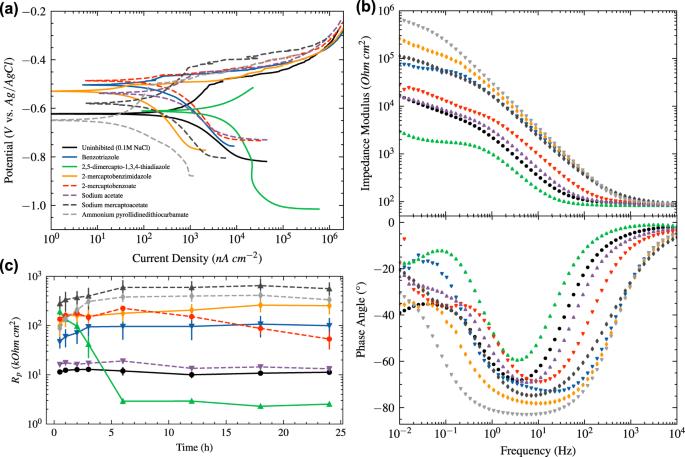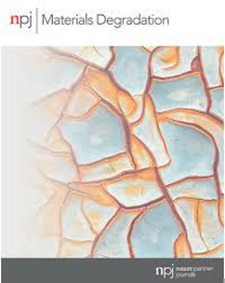Laying the experimental foundation for corrosion inhibitor discovery through machine learning
IF 6.6
2区 材料科学
Q1 MATERIALS SCIENCE, MULTIDISCIPLINARY
引用次数: 0
Abstract
Creating durable, eco-friendly coatings for long-term corrosion protection requires innovative strategies to streamline design and development processes, conserve resources, and decrease maintenance costs. In this pursuit, machine learning emerges as a promising catalyst, despite the challenges presented by the scarcity of high-quality datasets in the field of corrosion inhibition research. To address this obstacle, we have created an extensive electrochemical library of around 80 inhibitor candidates. The electrochemical behaviour of inhibitor-exposed AA2024-T3 substrates was captured using linear polarisation resistance, electrochemical impedance spectroscopy, and potentiodynamic polarisation techniques at different exposure times to obtain the most comprehensive electrochemical picture of the corrosion inhibition over a 24-h period. The experimental results yield target parameters and additional input features that can be combined with computational descriptors to develop quantitative structure–property relationship (QSPR) models augmented by mechanistic input features.

通过机器学习为发现缓蚀剂奠定实验基础
要制造出长期防腐蚀的耐用环保型涂料,就必须采取创新战略,以简化设计和开发流程、节约资源并降低维护成本。在这一过程中,尽管缓蚀研究领域缺少高质量的数据集,但机器学习是一种前景广阔的催化剂。为了克服这一障碍,我们创建了一个包含约 80 种候选抑制剂的庞大电化学库。我们使用线性极化电阻、电化学阻抗光谱和电位极化技术捕捉了暴露于抑制剂的 AA2024-T3 基材在不同暴露时间下的电化学行为,从而获得了 24 小时内最全面的缓蚀电化学图谱。实验结果产生了目标参数和额外的输入特征,这些参数和特征可与计算描述符相结合,以建立由机理输入特征增强的定量结构-属性关系 (QSPR) 模型。
本文章由计算机程序翻译,如有差异,请以英文原文为准。
求助全文
约1分钟内获得全文
求助全文
来源期刊

npj Materials Degradation
MATERIALS SCIENCE, MULTIDISCIPLINARY-
CiteScore
7.80
自引率
7.80%
发文量
86
审稿时长
6 weeks
期刊介绍:
npj Materials Degradation considers basic and applied research that explores all aspects of the degradation of metallic and non-metallic materials. The journal broadly defines ‘materials degradation’ as a reduction in the ability of a material to perform its task in-service as a result of environmental exposure.
The journal covers a broad range of topics including but not limited to:
-Degradation of metals, glasses, minerals, polymers, ceramics, cements and composites in natural and engineered environments, as a result of various stimuli
-Computational and experimental studies of degradation mechanisms and kinetics
-Characterization of degradation by traditional and emerging techniques
-New approaches and technologies for enhancing resistance to degradation
-Inspection and monitoring techniques for materials in-service, such as sensing technologies
 求助内容:
求助内容: 应助结果提醒方式:
应助结果提醒方式:


